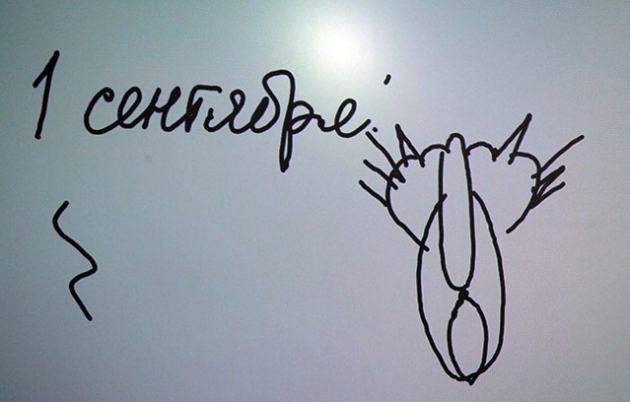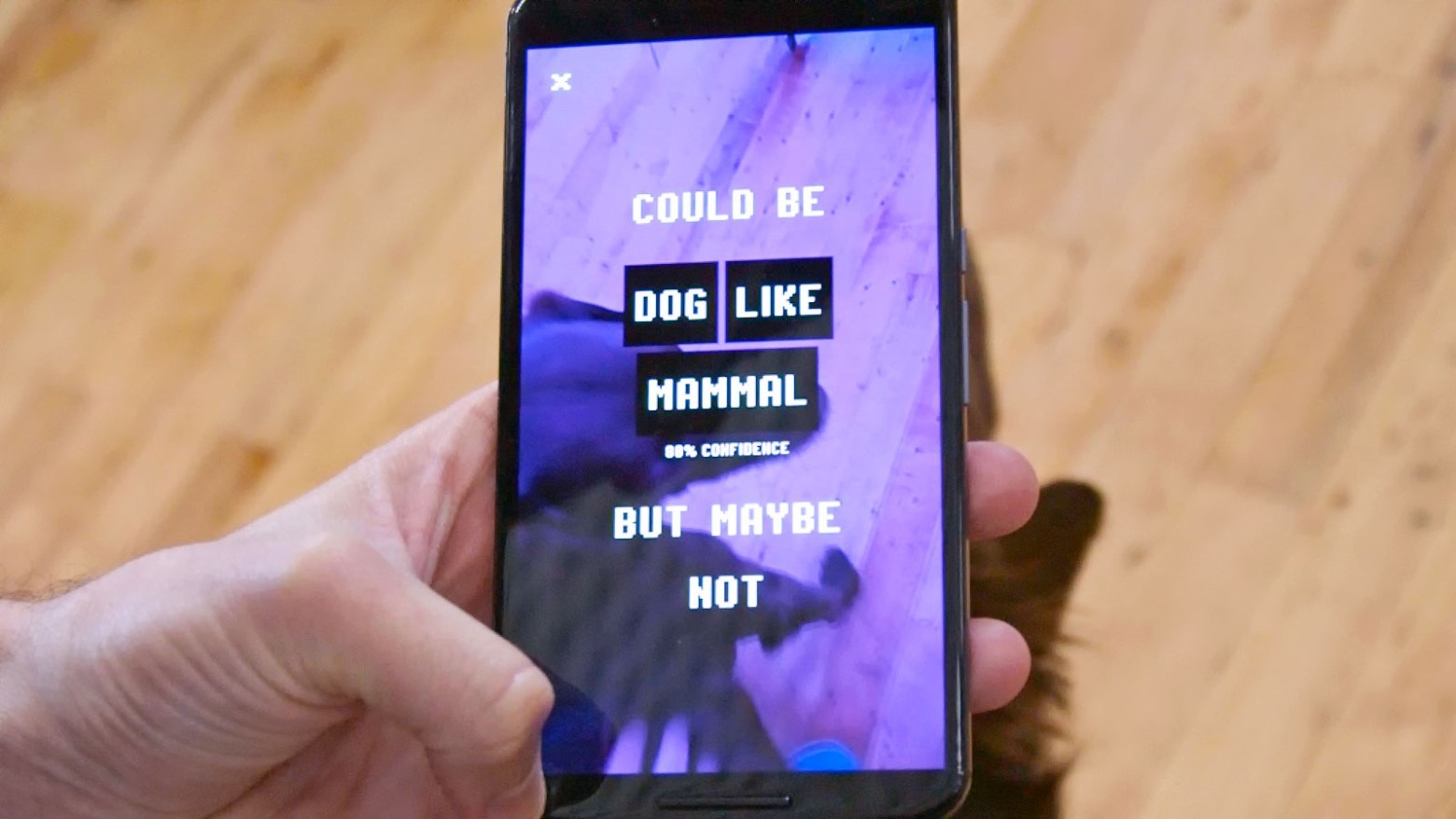Eight amazing games with artificial intelligence from Google

“Draw a cat in 30 seconds! .. Oh, I know, this is a cat ... Or maybe not” - approximately in such a format, the Quick, Draw!
Quick, Draw! - one of the new games released by Google developers as part of the AI Experiments project. Here are published cool toys that allow even a child to play with artificial intelligence. But there are games for adults.
In addition to the fun of the game and entertainment, AI Experiments experiments also provide some insight into what neural networks are capable of and how they can be used in practice. Not just for fun.
Giorgio cam
aiexperiments.withgoogle.com/giorgio-cam
')
The first game on the site AI Experiments. Probably the most interesting, according to the developers. Place the object in front of the camera lens on a smartphone or PC, and the neural network will instantly make up a verse on the basis of the recognition result - and put it to the music! Sometimes the result is very funny. Especially if you point the camera at unusual objects.

This project uses the MaryTTS , Tone.js , and Google Cloud Vision API programs. The source code of Giorgio Cam is published, as well as all other games on the project.
Quick, Draw!
quickdraw.withgoogle.com
In the game Quick, Draw! artificial intelligence gives the task. A person tries to quickly draw, for example, with a finger on a tablet, and the AI determines what is shown in the figure. It turns out fun, especially if you do not really know how to draw.
What is important, the neural network is trained to follow the direction of movement of the finger / cursor. Due to this, it is much better at recognizing patterns.
Infinite Drum Machine
aiexperiments.withgoogle.com/drum-machine
Infinite Drum Machine shows a map on which different instrument sounds are placed according to their degree of similarity. If you hold the mouse on this cloud, the sounds are played in turn. If you like a sound, we place it on a drum machine with four tracks. Well, then we start playback. Such an application would be a hit on Google Play. However, like the rest of the games on the site AI Experiments.
As stated in the description, the t-SNE technique was used in the development, that is, non-linear dimension reduction and visualization of multidimensional variables (t-distributed stochastic neighbor embedding). The algorithm calculates the digital fingerprint of each sound and places it in multidimensional space, in relation to other fingerprints. To interact with a person, the multidimensional space had to be flattened to two-dimensional.
Bird sounds
aiexperiments.withgoogle.com/bird-sounds
As in the previous game, here the system using the t-SNE technique organized thousands of sounds according to the degree of similarity. Only sounds are not instruments, but bird voices. For decades, ornithologists have been collecting this collection.
Thinging translator
aiexperiments.withgoogle.com/thing-translator
The “translator of things” translates not words from one language to another, but objects. He literally says out loud how any object sounds in your chosen language.
This is just one example of what can be done using the Google Machine Learning Software Interfaces ( Cloud Vision API + Translate API ) - even without knowing anything about machine learning.
AI Duet
aiexperiments.withgoogle.com/ai-duet
Another interesting music game from Google. You start playing a melody - and the computer continues it for you, using the most beautiful and logical continuation.
As it is easy to guess, when learning a neural network, thousands of existing melodies were played. The AI gradually began to understand notes and recognize harmony in the melodic figure. Understand in which places the melody should change direction, in which rhythm to continue the melody, etc. He himself himself mapped the map of the most popular, that is, harmonious sequences and transitions.
For the maximum buzz to the computer, of course, it is desirable to connect a MIDI-keyboard. Then with the AI, you can organize a full-fledged composer duet, playing a melody in turn. He continues what you started, and you play along with his variation.
Visualizing High-Dimensional Space
aiexperiments.withgoogle.com/visualizing-high-dimensional-space
This experiment helps to understand what is happening in the "brains" of artificial intelligence. The program visualizes this on the screen. It is here that you can see with your own eyes the multidimensional space that was mentioned earlier and understand how the t-SNE magic technique works. How data is organized in spaces where the number of measurements is more than three.
One of the authors explains in a demonstration video that even people can be represented as multidimensional objects in a multidimensional space. It is easy. In one dimension, we have the “date of birth” parameter - and in this dimension we are associated with other similar multidimensional objects (people). In the next dimension, we have the parameter “place of work” - in this dimension there are completely different interrelations. And so on. Absolutely all the people on the planet are part of this multidimensional network. The same multidimensional space is built for word meanings, for images, for melodies, and for any other data. All this is then used in real-life applications, when the neural network is trained to recognize images, to understand the meanings of individual words in the meaning space.
Google-developed visualization techniques will be useful to all developers who work with multidimensional spaces, t-SNE and neural networks.
What Neural Networks See
aiexperiments.withgoogle.com/what-neural-nets-see
Another experiment that shows the insides of the “computer brain”. In this case, we are not talking about measurements of multidimensional space, but about layers of a neural network, each of which reacts to certain signals. In case of sequential processing by many layers of the neural network, where each next layer processes the result of the previous one, the AI begins to recognize features of an ever higher level.
And remember, the more you play with Google’s AI - the faster it learns using your drawings and observing behavior. Unfortunately, people can not only teach, but also spoil the AI. For example, because of illiteracy, many people paint a hurricane in the form of a tornado. And gradually, the neural network will refuse to recognize a tropical cyclone pattern as a hurricane, and only a tornado pattern will be considered a hurricane. In general, everything is like in life.
Source: https://habr.com/ru/post/399321/
All Articles